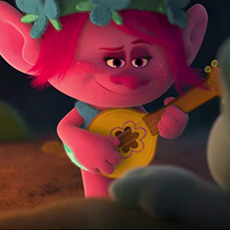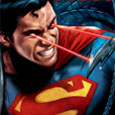Warner Bros. Pictures (1978-2006), Warner Home Video (June 7 2011), 8-disc Blu-ray set, 906 mins plus extensive supplements (mostly standard definition), 1080p high-definition 2.40:1 widescreen, DTS-HD Master Audio Surround, Rated PG/PG-13, Retail: $129.98
Storyboard:
Christopher Reeve’s perfect Man Of Steel leaps from the pages of DC Comics and takes to the skies for two blockbusting adventures and two further sequels of diminishing returns that still contain moments of true fantasy wonder. The least said about Brandon Routh’s belated one and only attempt at donning the cape the better.
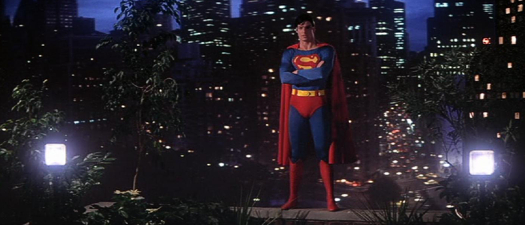
The Sweatbox Review:
If there was ever a significant motion picture property as much maligned as the eventual Superman movie series would become, I’m not sure what it would be. Jaws, perhaps? Nope…after the phenomenal first film, underrated director Jeannot Szwarc actually delivered a pretty solid, if derivative, second effort, prolonging the sinking of the shark series until the third and fourth repeats. The Godfather’s third outing may often find itself under attack, but that was more a case of a delay between films, while even Rocky’s six chapters at least held up a consistency and a surprisingly knock-out final bout in the ring. Superman, however, went off the rails behind the scenes even before the first film was released.
Back in the 1970s, before Superman: The Movie, in fact, comic book movies didn’t exist. Superman had appeared on screen before, most notably in the Fleischer animated cartoons of the 1940s and the 1950s George Reeves, and other superheroes also proved a draw in movie serials and on television. The success of the Batman show and spin-off movie in the mid-1960s suggested that comic book material should be treated with a bit of comedy to take the edge off the ridiculousness of the costumed characters (and also to draw the eye away from less than stellar special effects), and when producers Alexander and Ilya Salkind acquired the Superman rights from a DC Comics that couldn’t see the value in a big screen version, they envisioned a real-life comic, with the emphasis on comic.
It’s A Bird! It’s A Plane! It’s Superman! had been a minor so-so musical hit on Broadway, and they hired the writers of its book, David and Leslie Newman, along with The Godfather’s Mario Puzo, to pen an initial screenplay. The Salkinds were intent on making a two-movie production that would be the comic book movie to end all comic book movies, picking the cream of the top talent – basically anyone who was a hot name, no matter their price – to put in front and behind the camera. Steven Spielberg offered to direct, but this was pre-Jaws and the Salkinds elected to wait to see how that film did before they would negotiate a deal. Jaws was a smash, and Spielberg moved on. Because he had just had a hit with The Omen, the Salkinds pounded on Richard Donner, who would prove both the best thing that could have happened to their endevors…and the unwitting catalyst that set in motion the undoing of the series…

Superman: The Movie – Theatrical Edition (1978, 143 mins)
What director Donner brought to the Superman project was verisimilitude, and he somewhat famously had this word nailed up on every production department’s wall. And Superman: The Movie has verisimilitude in abundance as a result. It’s often been called “three movies in one”, but I’d actually argue the case for four. The first, opening part, set on the planet Krypton, is pure Kubrickian sci-fi, complete with John Williams’ stand-in for Thus Spake Zarathustra. Here we find the infant Kal-El’s planet doomed by its own sun, but he escapes its destruction through the efforts of his father (Marlon Brando, bringing much weight to the opening scenes), who sends him rocketing to Earth.
Once on our world, where he lands in Smallville’s rural Americana itself, the film becomes infused with Norman Rockwell visuals, with vast fields of sunlit corn and sentiment portraying the epitome of small town life. Kal-El, discovered by good folk, is raised as one of us by the Kents, who name him Clark. Raised with solid morals and values these formative years provide him with his humanity and inner strength for truth, justice and good ol’ American ideals. The serious tone continues when a touch of Douglas Sirk-type drama intervenes with the death of his Dad, Jonathan Kent, which impacts upon him enough to awaken the final piece of Krypton, a glass crystal that was embedded within the construction of the capsule that brought him to Earth.
Heading into the frozen wilderness of the Arctic, the crystal creates its own replica of Krypton as well as a holographic incarnation of Clark’s Kryptonian father, Jor-El, who reveals his true heritage and purpose on Earth. Although the film returns to the atmosphere of the earlier Krypton scenes, the warm feeling of Americana continues, skilfully balancing the transition between the young Clark and the educated man who literally flies out from the Fortress once his learning is complete. Here, Superman: The Movie switches tack into its third mode: that of a big city thriller akin to The French Connection and its like, combined with a touch of classic news caper shenanigans.
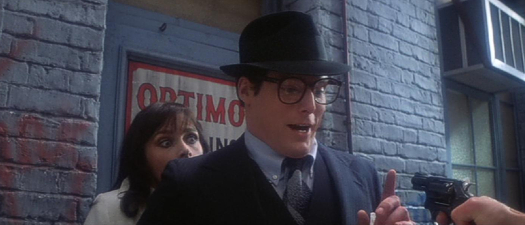
In disguise as a mild-mannered reporter, Clark meets Lois Lane (Margot Kidder), superstar journalist for the Daily Planet under its editor Perry White (Jackie Cooper, who recently passed on, stepping in for Alonzo Hawk himself, Keenan Wynn, when the long-time Disney villain actor succumbed to health problems before shooting). It’s here that Superman finds its groove, introducing some deliciously subtle comedy while not losing the serious tone. Chief among those bringing a sly humor to the proceedings is Gene Hackman, a then-recent Oscar winner (ironically enough for French Connection) and also bringing some serious clout to what was supposed to be a “comic book movie”. If anything, it’s in the casting that the Salkinds and Donner scored best, bringing in actors that really were living embodiments of their strip panel counterparts.
And to their credit they take the whole thing seriously, from Brando’s initial claim that “this is no fantasy”, which sets the tone perfectly, to Hackman’s sinister but unhinged charm, accompanied by his not nearly as devious henchman Otis (a brilliant Ned Beatty) and glamorous assistant Miss Tessmacher (Valerie Perrine, surely the dream of many a young boy who saw the film in original release!). I was one of those very kids, and Superman: The Movie mesmerized me and did its job perfectly – so perfectly in fact that I have no shame in admitting that the film is undoubtedly my most favorite movie ever, bar none! Although certainly fantastic and elaborately toned, there’s a sense that Superman was a “grown up” film when I first saw it, and it certainly proved a hit with adults even more than children back in 1978.
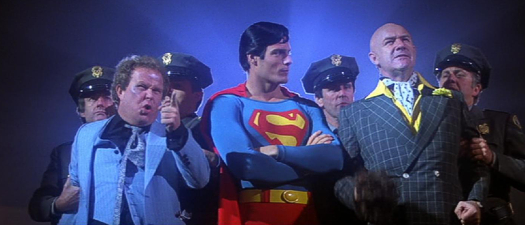
Coming just a year after Star Wars, Superman plugged the huge gap that the sci-fi adventure crowd was looking to fill before the next instalment of that series would hit screens, and the film cleaned up at the box-office. Central to its success is, of course, Christopher Reeve’s portrayal of the Man Of Steel, dubbed “Superman” by Lois after a romantic flight over the heights of Metropolis during the third section of the film. Over around an hour of screen time, the elements are expertly juggled: Superman is an action thriller, a crime caper, a romantic comedy, and seriously tinged drama all rolled into one. And then there’s more, with the final, “fourth” part of the picture really setting the benchmark and template for the flooding of superhero movies to come: when Lex Luthor (Hackman) sets his diabolical scheme in motion, Superman becomes a true visual effects blockbuster.
The film is stuffed with big effects all the way through it, most of them still standing up today, and a handful of them still very much baffling as to how they were achieved. But, going back to that “maligned theory”, Superman was always in danger of not being ready for its intended Christmas ’78 release, and it’s a minor disappointment that some, if only a handful of shots, don’t quite reach the heights that the rest of the film soars to. Here, the matting of Superman and Lois flying together is a little too obvious, although to be sure none of this is as noticeable as in the later films, where cost-cutting would reach new lows. The struggles between Donner’s wish to keep quality high, and the Salkind’s wishes to squeeze as much money from the venture as possible are well documented, as is Superman: The Movie’s ultimate success. I can only say that it remains my favorite film, and I won’t hear or say a bad word against it. It’s a perfect entertainment in almost every way.

Superman: The Movie – Expanded Edition (1978/2000, 151 mins)
Towards the end of shooting Superman back in the 1970s, Richard Donner had to concede to the constraints of time in terms of the complex special effects needed to bring an authentically looking flying Superman to the big screen. The film was locked into a release date that had to be met, necessitating the use of rear-projection and blue-screen matte shots where the elaborate flying rigs could not be used. With digital green-screen far off in the future, Superman’s costume in some of these shots had to be a strange shade of turquoise so as to not disappear from the special effects processes. It’s something that was noticeable back then – especially on home video repeat plays! – but in 2000, somewhat in order to gauge interest in a new Superman movie, Warner Bros. announced the release of a newly restored cut of Donner’s original film.
Back during production, Donner had shot Superman: The Movie and its intended sequel Superman II back-to-back, and much material was ultimately deleted from both films so as to reach a reasonable running time. The closing scenes of Superman, where he rewinds the world to save Lois and the world from destruction, were originally intended for the end of Superman II, but the story construction was brought back so as to give the first film a more suitable ending. This resulted in many Superman scenes hitting the cutting room floor, but when the film came to television, the shrewd Salkinds got the network to pay for the film’s length and turned Superman into a two-night television event by inserting moments that Donner had never intended anyone to see.
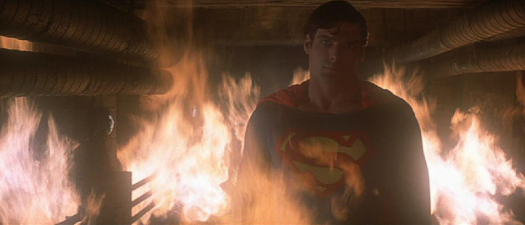
Many fans have managed to track down VHS tapings of this version over the years, and there are, in fact, many great moments in that extended TV edition to cherish: I love, personally, the moment when Clark saves Lois from the alley thief and, as they hail a cab and walk off, they actually pass Otis on his way back to Luthor’s lair, a wonderful little moment of future adversaries coming unknowingly close to each other. Best of all is a scene known as The Gauntlet, where we witness Superman’s famous resistance to fire and bullets as he tracks Luthor down (despite advances in visual effects, this washes over anything in Superman Returns). Also nice is a nod to a previous Superman and Lois Lane in having Bud Collyer and Noel Neill in an extended scene set on the train the young Clark races, also revealing their little girl to be the young Lois herself!
Given the chance to clean Superman up for the big screen and offer fans something new, Donner created the Superman: Special Edition (known afterwards as the Expanded Edition as he states this is not a Director’s Cut) that was set for release in 2000 (an excellent and exciting trailer, sadly not included in this collection, is well worth searching for online). Ultimately, and for unknown reasons, the wide release of this new version was dropped from Warners’ Spring calendar, although some limited screenings did take place and were extremely favorable (it was eventually released on DVD in 2001). Although not every moment from the TV showing wound up back in this cut, it’s a great way to see Superman for those coming to the film anew, as well as for long-time fans that get to see some cool new footage (or at least looking great in its widescreen framing).
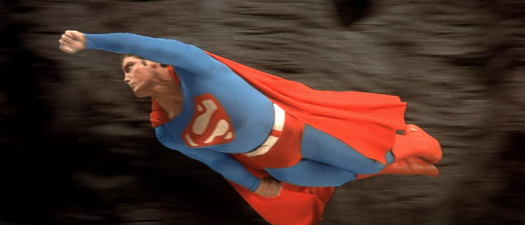
There are some issues with this cut: there’s a scene that was shot very early on in production, from before Reeve had really found who the character was, that has been inserted between Superman’s rescue of Lois and the helicopter and the news reports of that event on television that almost kills the movie dead; it just doesn’t belong in the film where it is placed, if at all. Others may bemoan the new soundtrack mix: the original stems were either unfound or in such deteriorated condition that a new sound effects track had to be assembled, and old timers may pick out these differences as well as several new additions intended to bring the mix up to today’s multi-surround channels as opposed to the film’s 1978 stereo surround (even though that was a novelty back then).
Best of all, however, and making up for any such soundtrack changes for me, are that several of the effects shots have been “fixed”. Without going to any George Lucas-like lengths to revision the movie with CGI, Superman’s turquoise costume is now blue in those occasional shots, and various mattes and wires have been cleaned up without losing any of the original intentions. Indeed, some of the lesser-tech visuals remain as dated as some of the other aspects, but this does little to detract from the fact that Superman: The Movie was the first of the still-current superhero genre, and the film that, even in 2001, set the benchmark. Like Peter Jackson’s extended King Kong, this Superman merely adds “more” to the mix, but that frankly can’t be much of a bad thing!

Superman II – Original Theatrical Edition (1980/81, 127 mins)
Even as the fledgling Superman franchise began to run off the rails toward the end of the shooting of the first Superman: The Movie in 1978 when relations between Donner and the Salkinds resorted to other crew essentially keeping them from talking to each other in case of a flare-up, another director was waiting in the wings to step in if tensions became intolerably unbearable. Again, the production problems surrounding Superman II are well documented, but in a nutshell, after the premiere of Superman, Donner had expected to go back to work on the second part before he received a telegram explaining that his services were no longer required!
Stepping into the fray was Richard Lester, a director who had become famous for the zany ’60s vibe of The Beatles feature A Hard Day’s Night (a film that I’ve never really been able to enjoy fully) and the much more coherent narrative of Help! (a film I continue to enjoy greatly). He’d also been involved with the Salkinds on their two-part Three/Four Musketeers movies earlier in the ’70s and, when relations between Donner and the Salkinds became strained, he became an intermediary between the groups. When it occurred to them (one way or another) that they could dispense with Donner’s fights for perfection and bring in Lester, who was more amicable to their budgeting, Donner was out and Lester was in.
However, since Superman was being shot back-to-back with its sequel, Donner had already shot an estimated 70-75% of material for II, including all scenes with Gene Hackman. The Director’s Guild rules at the time stated that a director must have been responsible for at least 70% of a film’s length in order to claim their credit and so, extraordinarily, Lester cut a great number of Donner’s scenes and reshot alternative moments. Several cast and crew put up fights: Hackman refused to come back under another director, and Williams declined to return to score the music for the film (claiming he “couldn’t work” with Lester). Kidder attempted to walk out, but as a vulnerable young star she didn’t have the clout and was contracted to return, the depression and weight-loss between the original Donner scenes and the later Lester re-shoots painfully obvious.

It’s also an often-repeated mistake that Marlon Brando was paid $3m for his ten-minute screentime in Superman: The Movie. In fact, Brando received his fee for a great deal more than ten minutes (as the Expanded Edition shows) in the first film: he had also completely shot an entire return in the role for Superman II. But, as with Hackman, Brando refused to return and ordered that his scenes be cut, since he had been contracted to work for Donner and not any other director. In the end, the Salkinds probably spent more money undoing all of Donner’s work than they would have done if they had let him continue, which can only point to them doggedly pursuing this path out of spite.
Certainly, Lester’s Superman II isn’t the film Donner would have made, but given the tumultuous production, it’s a remarkably strong film, even if it’s not quite the sequel that stands up to the first film that many critic argue it is. For one thing, the excesses in budget in cutting and re-shooting around Donner’s footage – including an entire alternate opening and the substituting of Susannah York as Kal-El’s mother Lara instead of Brando – meant cutbacks in post production: Williams’ 120-piece orchestra was down to around 60 players in Ken Thorne’s re-orchestrations of that original score, and the special effects can be decidedly un-special in places. But it gets more right than it does wrong – usually, as we have found out in retrospect, in those moments that are now attributable to Donner.
However, it’s still a film that I saw young enough not to worry about such things, and Superman II works as a follow-up to the original movie. I don’t actually mind that the Paris of the opening terrorist plot is cloudy and rainy: Donner insists he wouldn’t have allowed such drab shots, but I’ve always thought that was the point! And the resulting explosion that Superman hurtles into space is a much better mechanism for releasing General Zod and his two cohorts from their Phantom Zone prison than a repeat of the rocket from the end of the first film. Likewise, Lois’ discovery of Clark’s true identity is handled very nicely, not only down to Reeve and Kidder’s note-perfect performances but also down to Lester’s direction.
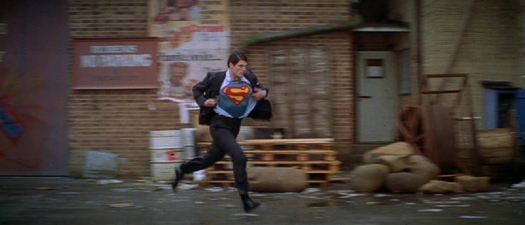
Fans also cry foul at some of the goings on in the climactic showdown in the Fortress Of Solitude, from teleportation and multiplying Supermen, to pulling off plasticky “S” shields off his chest to confuse the villains and their sudden use of new powers. Ilya Salkind insists DC Comics approved all such uses of powers and I actually have to say that they have never bothered me: the movie is about four beings that can fly, for goodness’ sake, its not supposed to be taken too seriously. If you believe, as I do, that movies should create their rules and stick to them, then I would suggest that, given these moments are set in a Kryptonian environment, how do we know that those beings couldn’t teleport, or that Superman’s multiplying himself isn’t something he’s previously set up in case the Fortress was discovered and he needed to defend it?
Sure, the S-shield is corny, but it’s fun and done well, and Zod and company’s heat beams from their hands provides a good bit of needed tension in an otherwise quite downbeat ending to a superhero movie. It’s true that Lester does adds some plainly comical and not altogether in keeping moments at other times, but at least they’re small spots in an otherwise serious movie. Some of Donner’s un-filmed sequences do suffer, however: instead of a worldwide demonstration of power-hungry Zod’s power, we have to settle for backwater America and the “destruction” of a small town that they couldn’t even bother to make Smallville, which would have at least had a feeling of coming full-circle.

Luckily, much of Donner’s writer Tom Mankiewicz’s scripting remains intact, and there’s something that feels right about having Lara as Krypton’s voice of reason instead of Jor-El this time around, given the situation and themes these sections of the movie explores. Donner himself was offered a joint credit (and does actually appear in one shot as a customer leaving Don’s Diner as Clark and Lois drive up) but declined as he felt the resulting film was so far away from what he had intentioned. Superman II was greeted with much critical acclaim and big box-office success on release in Europe in late 1980 and then in the US in the summer of 1981, which must have hurt Donner (Lester, now retired from the business, refuses to talk about the situation at all).
To be honest, I can now see the cracks in Superman II, but at the time it was just great entertainment. The moving of the turning back time plot device from this film to the first meant that Lester had to come up with an alternative way to “reset” the Lois/Clark-Superman dynamic, and although the “super-kiss” is often derided by Donner supporters (and I do count myself as one), it’s difficult to think of what else could have replaced it: if nothing else, this is actually as pure Superman as anything in Donner’s first film. That it’s not the only moment to score almost as high shows how good Superman II can be, and although it lacks the epic touch of the first film, it’s more of a comic book romp than anything, and if you can get past its history, there’s much to enjoy.
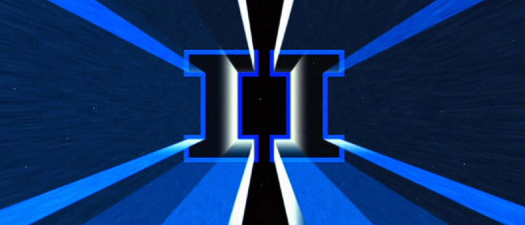
Superman II – The Richard Donner Cut (1980/2006, 116 mins)
Just what might have been if Donner had not been fired from returning to complete Superman II? That’s the question that The Richard Donner Cut strives – and almost succeeds – to answer. Once again when Superman II was to debut on television, the Salkinds charged by the minute and packed the film with as much “new” footage as they could, much of it Donner-directed moments and anything that basically didn’t involve Brando. Although by no means an official edition, the TV cut revealed that there had been a lot more material shot by Donner than that had ended up in the theatrical version of Superman II. For years fans clambered to see more: rumors of Brando’s scenes persisted, and stills from alternate scenes leaked out on the fledgling internet.
With the power of the net behind them, movie geeks began to petition to see Donner’s original footage. Movie groups began to trade the TV cut that included several amazing scenes, including a jaw-dropping moment where Superman destroys his Fortress Of Solitude in order to contain the three super-villains and prevent its power from being misused again. When Superman’s return to the screen was announced for 2006, along with the intention of using some of Brando’s cut footage from II to bring him back as Jor-El, it was also announced that in locating the Brando footage, all of Donner’s material he shot for II was also discovered, mislabelled and hiding in film vaults at the UK’s Pinewood Studios where Superman and Superman II were filmed.
Suddenly the practicality of a true “Donner version” of Superman II became a lot more viable, and the director – who had developed a strong working relationship with Warners through The Goonies and Lethal Weapon series among others – was invited back to create an alternate cut. Donner actually declined, feeling that he wasn’t the man who had made those films anymore, but authorized and entrusted the project to editor Michael Thau, who had been behind the 2001 special edition of Superman: The Movie. Thau assembled the footage as close to original editor Stuart Baird’s notes as possible, resorting to digital video effects to fill in some VFX shots and recomposite others (for instance, Luthor and Miss Tessmacher’s prison escape and Lex’s revealing his new plot to destroy Superman now occurs authentically over the Metropolis skyline).
The result is a sometimes odd “what might have been”…not a perfectly coherent film in itself, but an important and fascinating curio that allowed a director to return to a project he had unwillingly left over 25 years before. Why it’s not perfect is actually down to Donner: although Thau was responsible for pulling the movie into shape, Donner had the final word. Thau seems to have been more realistic in trying to provide a full movie experience and making an alternate version of Superman II that may have not reflected Donner’s original scripted vision, but one that redressed the balance of directorial ownership on his behalf. As such, the Eiffel Tower opening was still in the early cut, as was Lois’ revealing of Superman’s identity and the super-kiss.
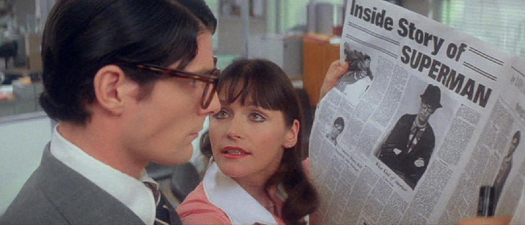
Donner on the other hand, seems to have wanted to eliminate as much of Lester’s footage as possible without sacrificing story narrative, and so the final emphasis is placed on essentially using practically all of his footage as possible. For the first time viewer and long-time Superman movie fan, it can play like seeing an all-new Christopher Reeve movie: out goes the Paris opening and in comes a fun follow-up to the end of the first film in which Lois pieces together the disappearance of Clark Kent every time the Man Of Steel turns up. Likewise Lara is now replaced by Brando, back as Jor-El as intended (and paid for!), and continuing the Christ-like scenario that Donner and Mankiewicz had intended to run through the two back-to-back films.
Generally, the tone is much more seriously played, reverting to the feel of the “third” section of Superman: The Movie than anything. The Christ analogies – something that the Superman mythos has often hinted on – is even more apparent in this version, the God/Son elements being most alluded to from Jor-El’s perspective (the banishment of Zod from Krypton, his statement that “the son becomes the father, and the father the son”, and the “resurrection” of Clark’s Superman). Not that II becomes an overwrought religious parable: it’s still choc-full of big blockbuster business when the three super villains are released from their Phantom Zone confines and discover our planet. In these moments, Donner really pushes the aggression and violence, at least as much as he can while needing to use Lester’s footage in some scene substitutes for what he would have shot.
And herein lies the problem with The Richard Donner Cut: the director never got to finish his movie the first time around and there is sadly no denying that this is a patchwork quilt that attempts to redress the balance and present an alternate, but not suitably finalized, edition of a film that was released officially in another form. As such, without the budget to go out and shoot the scenes he didn’t accomplish, Donner has to rely on Lester’s stuff to fill in the blanks, but it’s chopped down so much that some moments speed by not in service of creating a good movie, but in service of creating a near-enough cohesive compilation of Donner’s footage. And since that footage was geared towards shooting the original two-film script, some creative decisions that would have been revised are left intact here, leading to a strong sense of déjà vu especially in the closing moments.
For instance, when Superman reverses the spin of the globe in The Movie, that plot device was supposed to have been saved for the ending of II. Originally, Superman was to have ended on a cliffhanger, with Luthor’s diverted rocket hurled into space, where it would blow up and release the Kryptonian criminals. The Man Of Steel would ultimate reverse the world to put right their devastation and destruction, but it was decided that the first film needed a “proper” ending, so they moved that device from the end of II and would solve that problem at a later date. With Donner removed, the super-kiss gave Lester a new “reset” switch, but Donner had already shot some footage for the original reversing ending for II, and so that’s what happens in this cut.

The result – while it’s fun to see Perry White’s toothpaste crawl back into its tube (though not as fun to see obviously 2006 stock footage inserted when surely a Metropolis shot from the original movies could have been used?) – is a much less satisfactory closing that robs both films of their unique conclusions. It begs the question, if Superman can quite easily do this every time there’s a major problem, then why doesn’t he? The use here also raises some questions of continuity with a sub-plot set in Don’s Diner, where the robbed of his powers Clark is attacked by a customer, only to set things right after spinning the world back: but if he’s spun the world back then the diner incident never happened! Since Donner never shot a final end scene, the film then rather abruptly cuts to Superman’s trademark sign-off fly-by salute to the camera…it all feels more choppy than it should.
But don’t get me wrong. Superman II: The Richard Donner Cut is unbelievably fantastic viewing for those that were eager to catch all the lost footage, and the restoration of Brando’s footage is especially a revelation, tying the two films together much more strongly, even if I do miss Lara and Chris Reeve’s delivery of certain lines when he declares his love for Lois. And it’s good to see Hackman’s Luthor not being doubled by someone else in the later Fortress scene as he was in Lester’s version (rule of thumb: if you can see Hackman’s face, that’s all directed by Donner). But it’s also fair to point out Donner’s flaws: Luthor here is often played with much more inherent comedy, and some of it comes off just as bad as Lester’s touches.
This version also plays up some intrinsic story issues in both versions: once Luthor has discovered the Fortress and returns “South, Miss Tessmacher!”, she completely disappears from the movie, and even Hackman’s villain is relegated to second fiddle in the second half. But at least those super villains are stronger characters: less jokey and more dangerous, their invasion of the White House is spectacular in their disregard for human life and they do now actually seem to pose a real threat. Lester’s small town America is still there as opposed to a worldwide destruction scene, but much of Zod’s cohorts’ clowning is gone, which is a good thing.
Less of a good thing is the required use of production sound, especially in the earlier scenes, where Reeve and Kidder never got to re-voice their dialogue. As such, we’re hearing on-set recordings and although Thau does his best to mask this, the lack of dialogue clarity and the clanging of some props (listen for when Lois tosses her pen) might have had a bit more time spent on it to smooth it out a little more. One gaping plot hole is somewhat papered over: Lois’ discovery of Clark’s identity is a smashing little scene where she tricks Superman into revealing himself. It plays out totally differently in the Lester version, but at least Lester actually shot the scene.
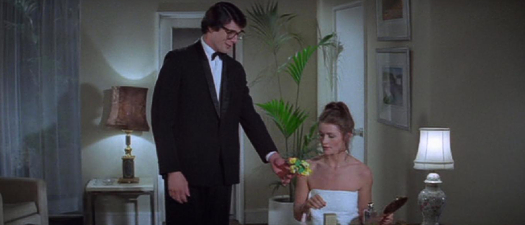
Here, Donner has had to rely on screen test footage, from where Reeve had been cast and they were searching for a Lois. It’s serendipitous that this was the scene chosen to see if their potential Loises had moxie as otherwise there just wouldn’t be the ability to show it in this form at all. But should it really be here? Using a mock-up hotel room set and two different editions of Reeve’s reverse camera angle, it certainly jolts one out of the narrative of the movie. Kidder is excellent and clear as to how she landed the role, but Reeve is still finding the Kent character and his look, sporting two different pairs of glasses in the alternate takes, and coming over way too prissy as Clark. More than that, the scene was never intended to be shown, and so technicalities pop up that are quite distracting: Clark and Lois never share the same eyeline or camera perspective, and it smacks of desperation to include the scene in this state.
Yes, they were desperate and, yes, it is fantastic to watch a legendary scene actually play out, but it only goes to show that the Donner Cut should never substitute the officially released version that came out in 1980. While that film itself was a mix of styles, what was done was done, and the Lester-credited Superman II was the result. For a long while, it’s only this revisionist Donner version only that has been available on Blu-ray: unfair to the original film (and Reeve’s and York’s performances) and to fans that might actually prefer that edition, even if Brando giving Lois that look is simply one of the best shots of whichever version you go for.
It’s absolutely spectacular to be able to see Donner’s footage for his Superman II, especially some wonderful touches such as Superman pushing back the truck that seems to have at one point crushed him: his S-shield revealing itself from the darkness in all its red and yellow on blue glory! But, and I say this as the biggest fan and supporter of the project to restore the footage and Donner’s vision, Superman II: The Richard Donner Cut is ultimately an uncompleted movie. It’s not the movie he would have made in 1980 (and he admits that himself) and the could well be some bitterness left that saw a great deal of Lester’s footage cut instead of making up something more coherent.
Perhaps there’s some new fan cut out there that makes up the difference? All I know is that, personally, the Donner Cut fits better alongside the Expanded Edition of Superman: The Movie, and while both are terrific additions to Donner’s Superman cinematic legacy, it’s the original theatrical experiences – especially of the first film – that take me back to being six years old again. It’s totally the right thing that Donner got the chance to attempt to put right what went so wrong back in the late 1970s (oh, for the chance of seeing Orson Welles’ original The Magnificent Ambersons, or Richard Williams’ intended The Thief And The Cobbler), but it really is in a set like this, as an extended supplement to the first and second movies, where it truly belongs.
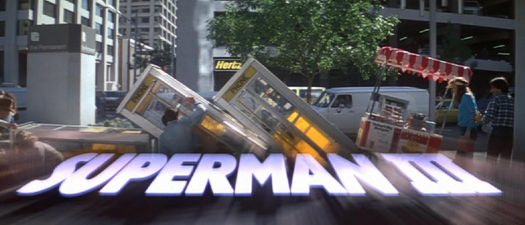
Superman III – Original Theatrical Edition (1983, 125 mins)
With Superman II’s success assured in Europe in late 1980, the wheels were put in motion for a third film even before its 1981 American debut, and with the behind the scenes drama that had plagued the first two films – especially the second – over, the Salkinds were free to continue their franchise without any commitments to Donner, Hackman or Brando. Or, it seems, Margot Kidder, who as a “punishment” for standing up to the producers during the shooting of II, was demoted to a supporting role. Still very much in favor was director Lester, who under the Salkinds had indeed shown he could bring a big movie in to their kinds of budgets (which meant he didn’t mind cutting corners on effects shots).
If Superman II’s comic touches had set the series lurching dangerously close to coming off the rails, Superman III derailed it completely, although there’s still much to enjoy, largely to Reeve’s always compelling portrayal. Here it’s mostly business as usual: the epic tone of parts one and two is abandoned for a much more comic-book based adventure that feels more routine instead of revolutionary. As with many trilogies, the origins and super-heroics of the first film gave way to a more sombre and at times dark story in the second film, as Clark did a bit of soul searching to find out who he really was, before this third outing basically rehashes some of all the elements, albeit in a potted fashion.
In many ways, it hasn’t gone unnoticed that the later Spider-Man trilogy shares much structural chronology with the first three Superman films, from those first film origins and the hero losing his powers and having his identity discovered by the love of his life in the second, to the third’s exploration of the central character as both hero and villain. Here, instead of black gook arriving from space to turn our webbed-wonder bad, Superman is subjected to something equally as alien: fake Kryptonite, a chemical make-up that doesn’t have the desired effect of killing him off, but causes his sense of right and wrong to go awry, sending the Man Of Steel into a super-funk.
This is the diabolical scheme of Luthor-replacement Ross Webster (The Man From UNCLE himself, Robert Vaughn), a mega-rich corporation head who discovers one of his employees has a way with computers and blackmails that employee to make sure those computers do things his way. When Webster’s plans to hack into high security systems for his own gain are foiled by Superman’s ability to save the day, he realizes that he must be rid of the superhero once and for all, hence the fake Kryptonite, cooked up here but lacking the vital ingredient to finally kill Superman off. Retreating into a really bad mood, Superman becomes a twisted version of himself, even willing to do Webster’s bidding, before of course he comes to his senses and a showdown with the villain’s powerful new computer, which threatens to get the Kryptonian mixture just right.
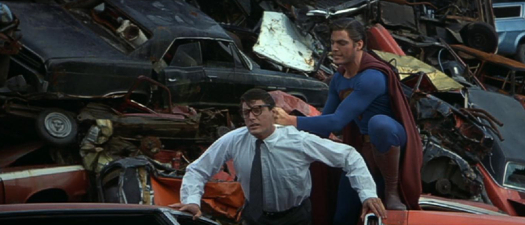
It’s in the funky-Superman scenes where Superman III genuinely comes to life, and Reeve has fun portraying the hero’s dark side, getting away from the goody-goody nature of the character. There’s other stuff to like too, such as the Smallville reunion where Annette O’Toole (later to be seen in the Super-world as Clark’s Mom on Smallville) is a note-perfect Lana Lang and the atmosphere suitably recreates the small-town feel of the first film. An opening slapstick “morning in Metropolis” sequence is silly and best played under the opening titles (an international TV version played the credits over the usual black space background, leaving the opening scene to play out without any diversions, but seen on its own it’s pretty risible).
Much better is the breakout of fire at a Smallville laboratory, where dangerous chemicals threaten to “eat through anything”. Luckily, Clark is on the scene and able to make a quick switch to save the day via freezing a vast lake and letting the ensuring thawing water drip the fire out; a sequence where the visual effects up their game and with moments that rival the first film for excitement and serious tone. Likewise, Superman’s battle with himself, as the pure hero inside fights to break free from the evil incarnation his has become, seems much more down Donner’s street than the comically-inclined Lester. Here, Clark emerges as a separate being to engage with the twisted Superman and restore himself to greatness (the revealing S-shield a real series highlight, whoever the director).
So, with so much good stuff in it, why is Superman III often overlooked in terms of the first two films? Well, Lester’s humorous asides certainly count for much of it (a generally lighter tone as written by David and Leslie Newman, who also contributed to the first two, though not enhanced by having a more serious pass or director chop their more frivolous moments), but unbalancing the film more than anyone is comic Richard Pryor. A massive comedy star at the time, Pryor’s involvement came when he expressed an interest in being in a Superman movie. Naturally the producers couldn’t resist, and the most questionable piece of casting in the franchise (yes, even more than the rumored Nicholas Cage potential for a more recent reboot) took place.

In actual fact, Pryor isn’t that bad: compared to how he hijacked other movies and played for straight comedy (Silver Streak, Stir Crazy), he’s positively restrained, being allowed to only let loose a couple of times. Sure, he’s hyperactive and doesn’t stretch himself, but I’d bet new audiences today wouldn’t mind him at all, save for two grandstanding scenes where he eats up screen time (a late-night Smallville computer hack, and a recreation of a Superman rescue that features poor effects and an absolutely rule-defying fall from atop a skyscraper in which he walks away unharmed). On their own, Lester and Pryor’s leaning towards humor might not have derailed the film as it does, but together it’s as if Reeve’s Superman is the only one taking things seriously (and he probably was).
Reeve was contracted to the film and so couldn’t say no (although another reason he perhaps went along with the joke was to get top billing for the first time), but like Superman’s personality it’s as if Superman III is two different films fighting against each other: a lighter-toned comic book, and a dark exploration of the superhero psyche. When it’s good, it can be very good – hence why it gets a knock but is mostly still accepted – but when it’s bad it can be quite embarrassing, especially in moments when the usually top-notch effects do nothing to hide their matte lines or, as in the end sequence, look like Thunderbirds models (at one point, Superman lifts himself off a “solid rock” that actually bounces)! However, those that poke fun at the admittedly cringe-worthy Leaning Tower of Pisa scenes are actually criticizing a left-over idea from Donner’s films, proving that even he was prone to some cheesy comic-book rifting himself.
As with the previous films, when Superman III played on television, it was in a longer “producer’s cut” that inserted a few deleted scenes, though nothing as extensive as the footage that had been shot for the first two films due to the tighter budget and less reaction from Lester, who basically shot what he was given. Once again, Ken Thorne adapted Williams’ music and, it has to be said that, as with Superman II, does a pretty good job of repurposing the score, even if the orchestration does feel a lot thinner. It’s the original theatrical cut we’re offered here, and since the film’s 1983 release no other official versions have been forthcoming. Although it streamlines a lot of what made the first two films great to very good, Superman III still has one or two punches that hit the heights.

Superman IV: The Quest For Peace – Theatrical (1987, 90 mins)
Lightweight and completely different in tone to the first two films notwithstanding, Superman III was still a box-office hit, and the Salkinds were eager to get moving on a fourth. Reeve was less inclined: without his friend Donner at the helm (and no chance of him returning) he was more interested in using his Superman clout to move away from the character and further develop his serious acting career. The Salkinds changed tact and, realizing that they had also optioned the Superboy and Supergirl characters in their deal with Warners-owned DC Comics, decided to bring Superman’s female cousin to the screen instead.
The Helen Slater-fronted Supergirl arrived just over a year after Superman III, which probably tells you all you need to know. A combination of the producers’ comic-toned sensibilities and some hideously dodgy hocus-pocus elements, poor young Slater was doomed from the get-go. Again, some of the moments are fine, but the movie, from Jaws 2 director Szwarc, was submitted to some drastic cuts that made it even more incomprehensible, and despite a typically over the top performance from Peter O’Toole and a fairly solid score from Jerry Goldsmith that even references Williams at one point, the film was an expected bomb.
The Salkinds tried another attempt to get another franchise off the ground again with Santa Claus: The Movie, an epic origins story that again has some fun moments and has become something of a seasonal favorite, but what they really wanted was to get Reeve back in the costume. By now the film rights had reverted to Warner Bros, who partnered with the burgeoning Cannon Films group to create a Superman IV. It was with the promise of creative input and the chance to get a pet project, Street Smart, produced, that Reeve was enticed back to the cape, but it was Cannon that were the ones being the most creative…with the finances.
The original deal was to splash enough cash on Superman IV so as to create a film that would return to the ideals of the first (with the Salkinds gone, Donner was even asked to return again…and again declined), but unbeknownst to Warners and Reeve, the company slashed the Super budget in half and spent it on several other projects, all of which tanked big time in release. This left Superman IV, which at one time ran an epic 134 or so minutes and was rumored to bring back Susannah York in more than just voice as Lara, in jeopardy, with hardly enough money to complete its special visual effects. Warners stepped in and took control of the film, but deemed several unfinished sequences inconsequential and cut the film to its US theatrical release length of 89 minutes.

It’s this cheapskate approach to the film that ruins it. A then-timely plea for our world to take a good look at nuclear armament, Reeve was eager to have Superman help save us all by removing the threat of war. One of the reasons Donner declined to return was that he didn’t believe Superman should engage himself in “real world” politics (the later Superman Returns made the same mistake with allusions to September 11, 2001), and there’s plenty of truth in that. Reeve was basically out to try and get a message across – and good for him – but it seems a little forced and one-note, with much of the film so preoccupied with that theme that it struggles to actually have much “fun”, though this would seem to be down to the fact that a good chunk of the movie is “missing”.
Reeve also wanted to try and pick some of the “best bits” of what made the first two films work and bring back some of the warm, epic tone and super-heroics and villains. To this end, Hackman returned to the Salkind-free set to reprise his role as Luthor, and Kidder is back as Lois, with the rest of the original cast largely in check. Again, there are some good things here, such as an opening moment set in Smallville that has more Donner feeling running through it than the whole of the turgid Superman Returns, and Luthor’s greeting of his old adversary when they meet again (“It’s your old friend, Lex!”), and some of the miniature work – completed before the budget cuts – is fine. But after those cuts, the bad matte screen work is painfully abundant and too easily picked out. It’s a Superman movie made on the cheap, no question about it.
Not helping much is the film’s re-run of past glories: Clark tells Lois he’s Superman again (or rather she seems to know it’s been him all along and has suppressed saying anything) and they fly off for another Can You Read My Mind? moment before another super-kiss renders her memory blank, while Luthor once again is responsible for pitting the Man Of Steel against another super-villain, in this case his own creation, Nuclear Man. Now an arms profiteer, Luthor’s scheming mind (the only mention of his comics-origin scientist’s brain in all of the films) produces the Superman clone to get rid of his opponent once and for all (sound familiar?), and although a nice touch has Hackman voicing Nuclear Man’s menacing lines, he’s just not that scary with his 1980s blond blow-dried hair. That Superman battling Nuclear Man takes up much of the second half of the movie isn’t nearly as exciting as that sounds either, due to the cut-rate effects.
There are some good ideas playing out, such as Nuclear Man’s “birth”, a very memorable sequence that is still good in a comic-book way, and his being powered by the Sun, but there are others just as bad: his alarmingly growing finger nails for one thing! As already mentioned, the effects are barely up to scratch, but the use of the same shot of Superman flying towards camera several times is something even Filmation would have been ashamed of. Likewise the epic location and Pinewood Studio shoots of Superman: The Movie and Superman II are replaced with dressing a London subway station, stock footage of the UN mixed with a totally different English office complex, and shooting as much as possible around the then-Cannon owned Elstree Studios (Superman’s arrival at an orphanage saw one of the Studio gates used as its entrance, which I know because I was not only there but recognize the power house building in the back of the shot!).
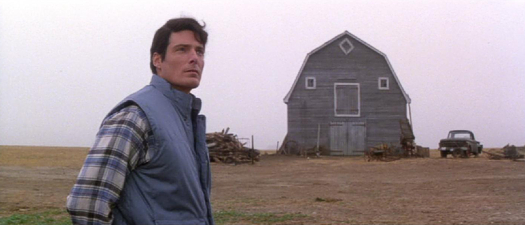
Many fans treat Superman IV: The Quest For Peace as the Superman film that shouldn’t exist. For me personally, that’s a vastly unfair and harsh appraisal: true fans would see that its creators were actually trying to regain a foothold after the series lost touch with what made the first one so great. It’s a film that became a victim to studio politics and budget cuts during production – otherwise a very rare occurrence – but in this case something that even Superman couldn’t have prevented. However, only some blame can be laid there: even without budgets cuts there are silly things often happening, like a quick repair of the Great Wall Of China in a real “WHAT!?” moment that even I can’t defend. And, when Superman and Lois fly above the clouds in Superman: The Movie it’s carried by the romantic magic of the moment, but here when Mariel Hemmingway is lifted almost to the moon it’s just sad and pathetic that she doesn’t die immediately!
But even then I’d still argue there’s a lot of enjoyment to be had. Reeve simply is Superman/Clark Kent and the different aspects he brings to each role is never more typified than when he double books a dinner date as Superman with Lois and as Kent with a glamorous new Daily Planet proprietor (Hemmingway) and has to repeatedly quick-change between both personas to keep them both occupied. The original trailer also showed us glimpses of more scenes with Hemmingway’s character, including a clandestine kiss with Clark, but once again it’s only the final release version we’re offered here (fans should note this is the US cut, not the European cut that included two extras scenes – Superman saving a village from a lava flow and a little girl from a tornado – these are presented as deleted scenes for some reason).
Also great is Williams’ triumphant score, here adapted with his authorization by his old orchestrator Alexander Courage (yep, the same composer of the Star Trek theme), and even featuring some new music from Williams himself who, although he was willing but unable to contribute the final music, did sketch out themes for some of the new characters, including something suitably barbaric for Nuclear Man. The central nuclear storyline, ultimately silly villain (although nothing as silly as an earlier character that was cut), lack of much Luthor and overall cut-price approach may have thrown the series off the tracks for good (Reeve later apologized for the film), but Superman IV: The Quest For Peace certainly doesn’t disrespect the character nearly as much as Batman And Robin did, or even as much as this next misfire in the franchise…
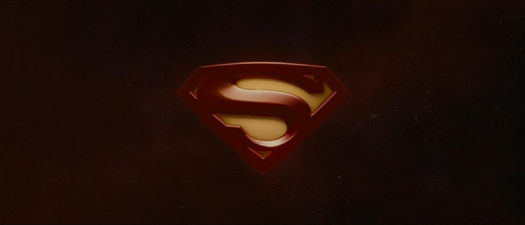
Superman (or Snafuperman) Returns (2006, 154 mins)
In retrospect, perhaps it wasn’t such a good idea to have Reeve end Superman IV with the final line, to the re-imprisoned Luthor, “See you in twenty”, as it turned out taking just that long for the next film in the series to appear. Variously known as Superman 5 back when Reeve was slated to star again (whatever the box-office, IV had turned out to be a video hit) and when it was clear he would not be returning, and then as Superman Lives as various directors – including Tim Burton – played musical games with the director’s chair, it seemed the “Superman Curse” would continue to haunt any attempt to bring a new film to the screen.
Well, if you thought the previous films fell fowl to this supposed “curse”, wait until you get a load of Superman Returns! Supposedly an avid fan of Donner’s original, director Bryan Singer had finally made a pitch-perfect plea to Warners to reset the series back as if III and IV had never happened, picking up the story from Donner’s original first two films and creating a new sequel that would even keep Williams’ iconic music in place. For months, fans watched internet video diaries of the movie’s shooting, with the use of that score playing to highlight moments that got many of us salivating at what the director of the X-Men films was up to with the Man Of Steel.
Then the costume was revealed and for many – me included – the project lost a lot of authority. There’s no room here to really go to town about everything that was wrong about Superman Returns, but that’s just it: everything was wrong about Superman Returns. Many (and it kept getting repeated like a broken record) thought Reeve’s successor Brandon Routh looked identical in the cape: I totally disagree. While Reeve (and Hackman, and Brando) looked like the real comics come to life, Routh wasn’t anything like that: too young looking, with bushier eyebrows and too lean a face and the wrong build, a build that wasn’t helped any by that costume, that made him look weedy and in need of bulking up. The coloring was widely bashed, too, and the attempt to give Superman a more toned down and less flamboyantly vibrant look only ended up giving him a costume that looked more like the darker “evil Superman” from the third film (appropriate in retrospect, since Returns is an evil movie).
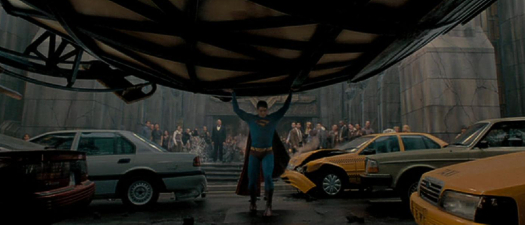
By the time the movie was eventually released, I’d tried not to get my hopes up. There had been some media attention that the press had tried to get a location shot of new Lex Kevin Spacey and Singer had ordered a ban on those images, which suggested to me they were taking the whole thing waaay too seriously: I mean, who hadn’t seen a bald Spacey already, when he spoofed Dr Evil in the opening to Austin Powers: Goldmember? The look wasn’t that different. Likewise we had to wait to see Superman flying, and when we did, it wasn’t so far off watching Bud Collyer being switched for an animated Man Of Steel in flight, even if in this case it was Routh being swapped for a CG cartoon (created by Sony Imageworks, who just can’t get away from rubbery humanoids) instead.
There had been rumors that Singer had lost interest in the film during editing, choosing to party instead of fine cutting his latest movie. And it really shows: the cutting in Superman Returns is really sloppy, with Singer regular John Ottman carrying out both editing and composing duties after Williams declined to return (a sore point with the director, it seems, given how super-fast Williams’ credit as theme composer is whooshed off screen). Perhaps Ottman stretched himself too far on such a big movie, because I’ve been a fan of his in the past but here the score is extremely basic, reprising Williams’ music at most counts combined with bombastic orchestral punches of his own that mean nothing. Even worse, he has the Superman March theme music to play with here, man, and he blows it big time, missing iconic cues on the right shots and essentially throwing the music away (at least Ken Thorne can be proud he uniquely adapted Williams’ music for the first two sequels with creativity and ability).
There are other big mistakes, too: like the none too small point of a young Clark Kent, in flashbacks, wearing glasses! He didn’t adopt these until emerging from the Fortress Of Solitude and donning the disguise of Kent to get his Daily Planet job. Even Lester – in Superman III’s return to Smallville – gets this not so tiny aspect right! As I sat in the theater watching this slow, slow movie unfold, I thought I might be missing what other audience members could see, until a moment when Superman’s kid (really, I’m not spoiling anything for you!) throws a piano across the room. Sounds great, doesn’t it? Well, it’s not. The scene is confusingly shot and misses out on playing up the suspense leading to the moment. Where is the big shot of the kid lifting the piano as the Superman March begins? Nowhere. Singer and his editor fumbles it, the result being that the girl behind me actually had to ask her friend what had just happened. Bad.

Then again, Ottman can only edit the footage he’s been given, and it’s just not that good. The premise has Superman – after he vowed that he “won’t let you down again” at the end of II – disappearing off to find the remnants of Krypton (pointlessly, when he knows the planet has been destroyed and his loss of powers means it’s risky he might not get back). This basically allows Singer to explain why the Man Of Steel didn’t show up to save us from such events as 9/11, but really Superman shouldn’t be inhabiting the “real world” to start with, just as he didn’t inhabit the real New York of the 1970s in Donner’s original. Anyway, just as Luthor finds a way to get free again, Kal-El returns to Earth, also turning up at the Daily Planet to get his job back as reporter (one, rare, nice moment pokes gentle fun at the “It’s a bird! It’s a plane!” line, as Clark walks in almost on cue).
Despite the identical build, no-one makes the obvious connection of course (“Clark Kent wears glasses, Superman doesn’t wear glasses”, to paraphrase the Mystery Men), even though both men have been off the radar for five years exactly. Ho-hum. But there are many more inferior elements to the movie than that: the remainder of the cast for one, from Kate Bosworth’s non-natural brunette Lois, to a ridiculously soft-spoken Frank Langella as Perry White (after House’s Hugh Laurie – a much better choice – was unavailable) and a frankly effeminate Jimmy Olsen whom I can’t even remember. Things threaten to pick up when Superman is called to save Metropolis from a falling plane: the music begins to pump, and a little excitement starts to build up – but then Singer fumbles the most important single shot in the entire movie: the ripping of Clark’s shirt apart to reveal the all-important S-shield on his chest, which the camera totally misses!
Seriously, after five years away in story terms and almost twenty between this and the last film, the big reveal may as well not have even been featured. Furthermore, Superman Returns then proceeds not to be a “sequel” to Donner’s film, but practically a gosh-darned remake, with Routh recounting lines from the original (“Flying is still the safest way to travel”) and the basic plot, centering on Lex’s “affinity for beach-front property”, repeating much of the same ideas. And it’s just not anywhere near as good, much of it down to Routh, who just never smiles enough. In the “making of” supplements, he’s seen joking around a little more and when he smiles he looks so much more relaxed in the role. Reeve used to smile all the time, but Routh plays Superman like a plank of wood, with a geeky little voice that’s not different enough to his Clark Kent.

Spacey himself is “okay”, but he’s not Hackman wily or menacing. When he shouts at Lois, the scene’s dialogue is so confused that it actually takes away from his ability to deliver the line. He’s also surrounded by a bunch of dimwit cohorts (Parker Posey and Kal Penn among them) that essentially do nothing, Parker along for the ride to fill in for Miss Tessmacher, but not being anywhere near as endearing. Okay, there are some good things about Superman Returns, like the resurrection of Brando’s Jor-El and the end of the movie. Seriously, I was glad when it ended. When I originally went to see Returns, I went with my Mother for old time’s sake. We came out and I was very quiet. After a length of time she asked what I thought and, you know? I couldn’t even talk about it!
You know you’re in a bad state when the most “exciting” part of a Superman movie is supposedly perching on the edge of your seat wondering if a waterfall-approaching biplane is going to manage to raise itself up before crashing into the waves below, and Superman Returns is easily the most woeful of any Superman project set to screen. The filmmakers, in their slavish nature to Donner’s original, either didn’t want to stray far enough away or couldn’t really be bothered to begin with (rumors persist that Singer became egotistical, disappeared to “party” too often, and certainly overspent, not least $11 million on an opening scene he had completed and then decided to cut!). There’s more authentic Superman feeling in the Smallville scenes of Superman IV than there is in the whole of Superman Returns.
It’s just a bad, bad movie that totally disrespects the character and has him do some questionable stuff, and it deservedly failed to live up to box-office expectations: no wonder Singer didn’t get a chance to follow it up, thank goodness. Although the rumors are that Zack (Watchmen) Snyder and Christopher (The Dark Knight) Nolan’s upcoming reboot will start fresh and embrace the idea that “there are no previous Superman movies” along with jettisoning Williams’ music (say it ain’t so!), the supporting character casting (Kevin Costner as Jonathan Kent, a potential Russell Crowe as Jor-El) and Amy Adams as Lois suggests they’re going for a suitably epic but classic feel, and Henry Cavill looks to be a fine choice to step into the boots, tights and cape combo. Whatever else, they’re surely not going to make anything as risible as Superman…nope, make that Snafuperman Returns!
Is This Thing Loaded?
Although this set carries the very pompous moniker of Superman: The Motion Picture Anthology 1978-2006 (covering, ostensibly, the movies that repeat Williams’ score and Donner’s core ideas), it really should have been called Superman: The Movies and dated the content between 1942 and 2006, since practically everything featuring Superman that appeared on the big screen during those years is packed into this collection. I guess the intention was to replicate the similar Batman: Anthology that collected the four Burton/Schumacher movies, itself released as a preface to Nolan’s rebooting of the Dark Knight.
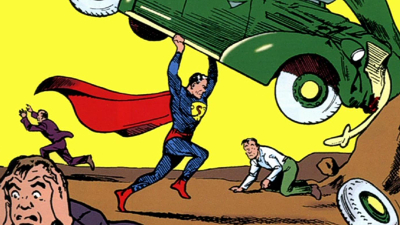
That Nolan – along with Snyder – is at it again and about to re-launch the Man Of Steel is why this set has arrived now, in order to both allow audiences to catch up with Superman on screen and “clean the slate” for that new movie to open. Indeed, what this package really achieves other than anything else is to update the excellent 2006 Superman DVD box set to high-definition…and then some! For those with that collection, everything of note has been carried over, save for the super tin packaging: this Blu-ray set is more interested in bringing you upgraded discs rather than replicating that wonderfully assembled experience all over again, so hold on to it.
It’s also nice to see the emphasis has shifted away from the lamentable Returns, which gives it its most recent 2006 dating, and back towards the “proper” movies with Reeve and Kidder. Certainly, if it weren’t for the fact that this set compiles all of Superman’s big screen career except for the cliffhanger movie serials (still available separately, and big fun), I’d have honestly preferred a collection of just the Reeve movies so that I could further forget Returns existed. However, as a completist, I guess it’s better to include it than not, though thankfully the breadth of this collection manages to swamp it as the footnote it most certainly will be remembered (or not) as.

In short, even if you have the previously released 2006 DVD collection or the previously released Blu-ray Discs of Superman: The Movie and Superman II: The Richard Donner Cut, you’re going to want to dip in the pocket again for this set. Everything has been carried over and more, with discs appointed for each alternate film and edition instead of trying to squeeze too much onto each platter. From the 1940s Fleischer and Famous Studio cartoons, through television Superman George Reeves’ 1951 B-movie debut and the post-Reeves Superpup pilot, to extensive extras on Reeve and Routh’s portrayals…it’s all here (HD supplements marked as such).
Disc #1 – Superman: The Movie 1978 Theatrical
Thanks to the original movie being released several times on DVD and once on Blu-ray already, pretty much all of this material will be familiar to those with those previous discs, starting with the Audio commentary with producers Pierre Spengler and Ilya Salkind, in which they defend their corner and praise Donner’s work. The vintage TV special The Making Of Superman: The Movie is how it should be done; an in-depth, 52-minute measured look at production that features tons of behind the scenes footage and is not afraid to reveal as many secrets as it keeps (there’s even an alternate “wink” fly-by from Reeve at the end). Back then, such shows were produced not only to promote the movies, but to inform the public as to how they were made, and it shows.
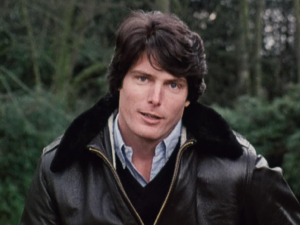
Following the Bud Collyer cliffhanger serials of the late 1940s, George Reeves makes his debut as Superman in the complete 1951 feature Superman And The Mole-Men, which then spawned the phenomenally successful Adventures Of Superman series, which this film was eventually spliced in two for. A poverty row picture of just under an hour in length, Mole-Men is as unintentionally hilarious as it is quite good fun, and for once we actually see Superman “flying” and catching someone mid-air as opposed to the almost still-frame Reeves whooshing through the sky that would epitomize the TV show. The print is in serviceable shape, though I wish this was a true progressive transfer and that the color-crosstalk had been eliminated by desaturating the image.
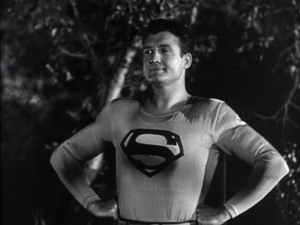
The Warners Looney Tunes were always quick to satirize the popular figures of their day (and you thought The Simpsons, South Park and Family Guy were groundbreaking?) and once Superman made it to animation – and a wider audience in the process – the Man Of Steel was ripe for the ribbing. Three classic cartoons (19:30 total), the Bugs Bunny starring, Chuck Jones-directed Super-Rabbit, the wartime Private Snafu featuring Snafuperman and Bob McKimson’s Stupor-Duck, with Daffy as Cluck Trent, all have fun rifting on the Fleischer’s established elements in those films, in various states of print quality. Lastly, a series of original theatrical trailers and TV spots (4:25) showcase the build-up to Superman’s release, although sadly the 2000 expanded cut teaser still hasn’t made the grade.
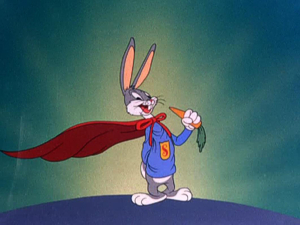
Disc #2 – Superman: The Movie 2000 Expanded
Here’s where all the retrospective stuff is, even if it has been super-recycled from the previous 2001 and 2006 DVDs. There’s the excellent and informative commentary from director Richard Donner and creative consultant Tom Mankiewicz that reveals some very cool aspects and touches on Donner’s treatment on the two films, and three documentary featurettes that fully cover the production from concept to completion. Running around 30 minutes each, Taking Flight: The Development Of Superman, Making Superman: Filming The Legend and, especially good, The Magic Behind The Cape, hosted by Jimmy Olsen himself, Marc McClure, are all complimentary to the 1970s documentary, with a great reflective tone that provides a brilliant new perspective on the production.
Although the extended cut of the movie does already include restored scenes inserted within its running time, for some reason they’re also offered as isolated moments again, ranging from seconds to full sequences, lasting over eleven minutes in total from a pre-restored print and fairly redundant. There were also still many moments left on the cutting room floor, only a couple of which are offered as additional deleted scenes lasting three minutes, from the bizarre (Otis feeding Luthor’s underground lair animals while he plays piano) to the downright awful (Superman’s saving of Miss Tessmacher from said animals), badly achieved and probably why it was cut.
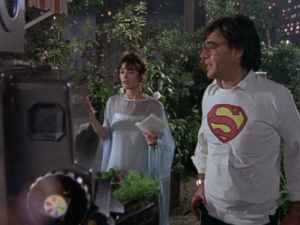
I’m still amazed at how a series of screen tests (22:25, with optional commentary) could be cleared for use even back in 2001, but here they are again, showing Reeve’s confirmation in the role and how close the likes of Anne Archer, Leslie Ann Warren, Stockard Channing and others came to landing Lois Lane even when Kidder’s performance (as shown in the Superman II identity reveal) is the clear knockout. Really cool is a terrifically dynamic isolated music-only track that showcases Williams’ score for those without any of the more recent special CD editions that have come to light, as well as some audio-only additional music cues (35:45) that offer eight alternate versions of score moments, including the hysterically cringe-worthy “funky bass” version of Can You Read My Mind? that you simply have to hear to believe!
Disc #3 – Superman II: 1980/81 Theatrical
Presenting the originally released edition of the sequel first, this disc marks the Blu-ray debut of Superman II in Richard Lester’s theatrical version, a welcome addition to this set. Commentary with producers Spengler and Salkind more than makes up for the absence of Lester’s retrospective participation, and their talk is understandably defensive to the production history and stresses to justify other aspects of the movie. The vintage TV special The Making Of Superman II makes no reference to Donner or any of the shooting hiccups, naturally (although I think I glimpsed him once or twice), but it’s again a good product of its time, essentially following the exact same formula of the program created to reveal the making of the first film in its 52 minutes.

As well as being fun to see footage of the premiere (with Hackman and, for some reason, Arnold Schwarzenegger in attendance), and Reeve’s increased confidence in evidence, it’s interesting to hear Lester’s perspective too, though it’s telling that Hackman, otherwise also a no-show, is only heard in a brief soundbite taken from the first film’s production footage. An additional scene is a scant 40-second offering considering there is much more that was cut from the eventual movie (not including Donner’s footage) and it’s not much of a scene at that, being a little more of Superman and Lois at the Fortress, where the Man Of Steel uses his heat-vision as a microwave to cook up a soufflé: a scene as silly as that sounds and even pushing things too far for Lester’s humor.

Accompanying the movie as before is the first batch of 1940s Superman cartoons produced by the Fleischer Studios, with the featurette First Flight: The Fleischer Superman Series setting the scene. At 13 minutes, First Flight isn’t the most insightful of documentaries, replying on a series of talking heads expressing how new and influential these shorts films were, but that’s about it, with nothing on their production or any real reference to the Fleischers being ousted from their Studio and the remainder of the series being completed without them. Better to marvel at the nine Fleischer Studios cartoons themselves: Superman/The Mad Scientist, The Mechanical Monsters, Billion Dollar Limited, The Artic Giant, The Bulleteers, The Magnetic Telescope, Electric Earthquake, Volcano and Terror On The Midway. A single Superman II theatrical trailer from 1981 rounds things up.
Disc #4 – Superman II: 2006 Richard Donner Cut
Again providing their side of the argument in the way the director was treated during the production of Superman II, the commentary with Donner and Manckiewicz absolutely draws the line between both camps. Donner is obviously still hurt by what happened and you can hear his pride dented, and although he can’t bring himself to comment on “the other director’s” footage or even say his name, it’s a compelling discussion with the now-late Manchiewicz. A two minute introduction by Donner serves to set up that what we’re about to watch is not a completed movie but a “what if?”, which more than appropriately sets expectations.
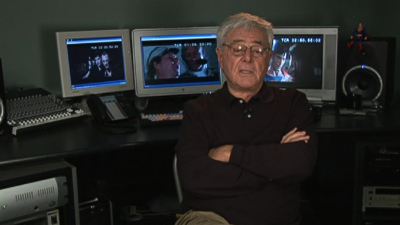
A further 13-minute featurette, Superman II: Restoring The Vision speaks to Donner and editor Michael Thau about just what went in to discovering the original footage and how it was reconstructed over 25 years later. There’s an interesting aside where Thau indicates his original cut presented a more rounded and completed movie before Donner insisted on more cuts of Lester’s material, wishing to remove and reinstate as much as possible. He even forgets “the other director’s name on purpose”, which can only skim the surface of what really went down between the two. Several additional scenes (8:45) still don’t show enough of what else was cut but they’re a bit flippant anyway, though Hackman’s choice of delivery on “You fool!” to Perrine gets me every time.
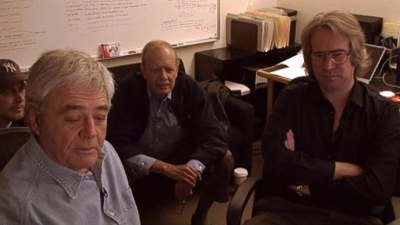
The post-Fleischer series of eight Famous Studio Superman cartoons concludes the original 1940s animated run with Japoteurs, Showdown, Eleventh Hour, Destruction Inc, The Mummy Strikes, Jungle Drums, Underground World and Secret Agent, all of which reach the same high marks of quality to the earlier films. World War II practically rendered Superman redundant after a time, when he could have ended those events instantly, which is why he should only really exist in his own version of our world and probably why these cartoons came to an end. You’ll find my full appraisal of the entire Superman animated shorts collection here, but the bottom line is that those hoping for HD transfers in this set will be sorely disappointed as they, and all of these extras so far, are standard definition only – a major missed opportunity.
Disc #5 – Superman III: 1983 Theatrical
As the quality of the franchise thins out a bit more, so do the bonus features! Once again there’s a commentary with producers Spengler and Salkind that, free of feeling any need to reference what when on with Donner, is a much better discussion of this third movie. As always, Salkind is quick to defend where others have accused, but he more than often has a point and even admits that the eventual film didn’t follow the path he’d envisioned, which would have brought Supergirl and the villain Braniac to the series in something that sounds much more ambitious and interesting. There are still elements of that alien electronic brain in the super-computer that the villains assemble, especially when Webster’s odd sister Vera is sucked into the wiring and emerges as a hybrid robotic being – a scene that is sadly over too quickly when they could have had a good super-battle, even if it did scare me silly as a ten-year old (although it doesn’t sound like I was the only one)!

The 49-minute vintage TV special The Making Of Superman III covers the same kind of ground as before, again with tons of production footage including a nice moment with Reeve’s assuredness coming through when he trashes a proposed take-off process as “useless” and suggests wirework instead. It’s also amazing to see how many of the film’s big scenes it showcases in plain sight: something that just wouldn’t be done today, and there’s a nice reminder of a fun cameo that’s geeky-cool to fans of the first film. One crew member refers to their star as “Chris Reeves”, whose way of quick-stop flying on wires is as unintentionally amusing as it looks quite dangerous, and years before Spidey gate-crashed X-Men’s set, another DC hero has some fun. Some additional scenes from the extended TV version add length (at 19:45) but don’t really reveal anything special except more Pryor, while a theatrical trailer does a pretty slow job of selling the film and gives away all the plot points.
Disc #6 – Superman IV: 1987 Theatrical
Although there is a rumored 134 minute workprint cut of Superman IV that had been assembled as Warners came in and took over the show in order to complete the movie the Cannon company could not finish, it’s the final US cut included on the disc, with a commentary with co-writer Mark Rosenthal, filling in where Chris Reeve was tragically unavailable. Possibly the most valuable of the tracks on any of the films because the history behind the film has been less exposed than the Donner business, this is a fascinating insight into the production. Frank and honest, Rosenthal confirms the extent of the cuts and tantalizingly elaborates on major sequences that might have been (and also inadvertently blows Returns’ premise out of the sky). Quite why when Warners came in to rescue the film they didn’t provide the additional dollars in order to make it a good one is not touched upon, although the blame is squarely set on the shoulders of the Cannon Group.
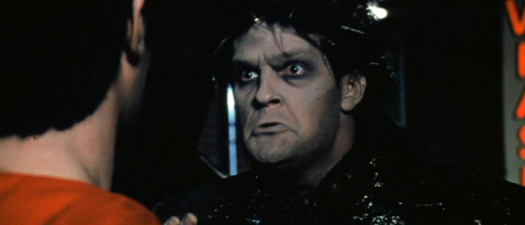
I make mention of the US cut here, as two of the deleted additional scenes (Superman saving some Russian military from a stray nuclear rocket, and a little girl from a twister) actually did make it into the European version, though why we don’t get those finished versions is a mystery. It’s actually a shame that that cut has not been featured here instead, if only to offer up something as a little bonus to supporters of the movie and drag it out a bit by a couple of minutes. Of the other scenes, fans will be pleased to see a healthy half-hour portion of the 45 minutes cut from the film, specifically more Hackman and “Nuclear Man #1”. An actual character, he was to have been a bumbling first attempt by Luthor to create a super-villain, a kind of Franken-Non, though he’s so childlike and stuck in the 80s, with awful theme music, that even if the film had been more accomplished he still may have been an embarrassment.
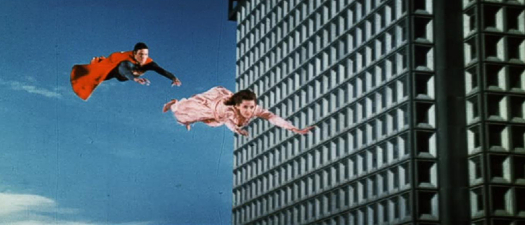
Still, at least we can finally catch a glimpse here at the infamous footage, as well as a handful of other moments, which don’t ultimately look like they would have added much to the film; Lois seemingly flying under her own steam in an extended Can You Read My Mind? sequence is simply foolish, though again there are some glimpses at a better film here. Also silly but sometimes good value is a 1988 Superman: 50th Anniversary Special in place of any making of Superman IV. This 48-minute Dana Carvey-hosted “documentary” is useless when it has several in-character celebrities waiting for the Man Of Steel to turn up in person, but the classic clip montages and genuine interviews with past film and television cast members make it worth watching. A single theatrical trailer is also included, but it’s not one of the better ones and doesn’t sell Superman IV as well as some other previews did.
Disc #7 – Superman Returns: 2006 Theatrical
Previously issued as an individual release, Superman Returns was well supported on disc, with over three hours of supplements presented on the initial Blu-ray and two-disc DVD. In the 2006 DVD collection there was even more, and it’s good to know that as much as I despised the film those extras have been carried over again here. If one is to have a copy of Returns in the collection, a bit of context is welcome, and the extensive documentary Requiem For Krypton (2hr 54m) at least provides this. As over-bloated as the movie is, Requiem is a leisurely pace through production – split into sections covering its origins, design, shooting – that basically reveals as little as much as it shows. Singer appears to be a brat “tolerated” on set by his crew (and very aware when the camera is on him), and often there are moments when his ideas aren’t the best in the crowd. Indeed, he often looks like he hasn’t got any, with other members suggesting things that he then latches on to.
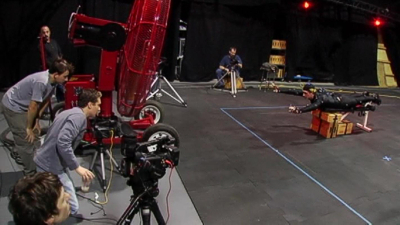
It’s more interesting than the film itself, but about the only things it’s good for is to show that Routh should have smiled more, and to explain why the movie turned out so bad! Worse still, it’s worrying when a film’s major supplement actually fills in the kind of backstory that should have been in the resulting film, but I will admit that Requiem is a very good documentary at almost three hours, even if I can’t say it brings a new appreciation for the resulting film. Nicely visually presented apart from the super-annoying techno music track, the pre-release web clip Resurrecting Jor-El (3:59) reveals how original Superman: The Movie production footage of Brando was mixed with CG to bring back the actor in the new Fortress scenes. Also drumming up the pre-release hype were Singer’s Video Journals, similar to Peter Jackson’s Lord Of The Rings and King Kong diaries (Jackson appears at one point, in a joke crossover). At a few minutes a pop, the entire 1hr 22m series reminds us how excited we were back during production, only to be crushed when the unexciting movie eventually premiered, but there’s some fun still to be had with some of these 29 clips.
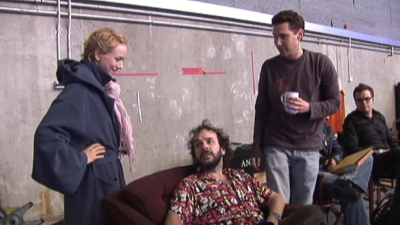
Of major interest to those with the 2006 DVD set is the inclusion of several deleted scenes, including the previously unseen Krypton opening, all in HD. Singer’s original opening for the film was to show Superman’s return to where Krypton was said to have blown up, a sequence that, to the tune of over $10m dollars, he decided to cut after it was fully completed. It was stated it was cut for pacing, which can only be true…it’s a long and drawn out scene that, while it makes for a much more appropriate intro reveal for the Man Of Steel, it immediately brings up other confusions: why is the apparently blown to bits planet still one large mass? How does Superman’s ship power itself and how was he able to build it? Why’s he got that snazzy black super-suit on? And how come he’s only affected by Kryptonite when he gets close to it, as opposed to being surrounded by great chunks of the stuff? What’s he even doing going out there in the first place when he knows he’s the last survivor?

One senses we’re still not getting the full picture here, though to be honest I wasn’t that bothered: when the ship’s searchlight picks out a giant S carved into the rockface, I think I might have walked out on the picture right there had it really started the film in this way. Needless to say this five minutes of the 21:27 worth of deleted scenes line-up didn’t impress me much, and those that have seen the eleven remaining moments will already know that, apart from one neat Adventures Of Superman-linked Jack Larson cameo for the geeks, there’s not much to be said for them other than they would have dragged the movie out even more. An outtake montage of one scene with Spacey sounds like it could be fun, but ultimately it’s not such a big deal. Two trailers round things out as before, though it’s still a shame not to have Singer comment on the film retrospectively.
Disc #8 – Bonus Supplemental Features
I, for one, am glad that Returns doesn’t hog the limelight this time around and has had its feature and extras confined to a single disc instead of grabbing three platters as it did in the DVD set. There are many more programs that I could count as being worthy for inclusion in this collection, such as the wonderful BBC Arena documentary The Story Of Superman on Siegel and Shuster for instance, produced as the 1978 film went into production, although ongoing bitterness between Warners and their families’ estates is perhaps why it was considered here. But what’s left on this final disc, which essentially gathers all the remnants of the DVD set’s material, is all pretty strong anyway, especially two feature-length documentaries.

The first, Look, Up In The Sky! The Amazing Story Of Superman, in HD (1hr 51m), was originally released as an individual disc in the run-up to Returns’ theatrical release and again in the 2006 set. Not only is it an excellent recount of Superman history in print and on radio, television, stage and the big screen, but the archival clips look fantastic in hi-def, especially the Fleischer Studios cartoons and even The Adventures Of Superman. The emphasis on screen projects is understandable given that they’re easier to illustrate, but the breadth is impressive and as all encompassing as could be hoped for, even including footage from the post-Reeves Superboy pilot. Although the final ten minutes is given over to promoting Returns, this is simply a terrifically well made retrospective, warmly and lovingly “scored” with Williams’ music.
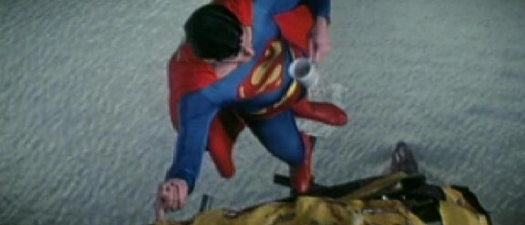
Going further in-depth on just the Christopher Reeve movies, the multi-part You Will Believe: The Cinematic Story Of Superman (1hr 30m, in 4:3) repeats some of what has come before but still serves up a lot of other information, especially after the first and second film go into production. Much of the length is devoted to the production of the first film and, for the first time both sides of the Donner/Salkind/Lester business speak out, with other members of cast and crew coming out in support of the discarded director. And the issue isn’t glossed over, either: it’s a major discussion around the one-hour mark that keeps getting referred to, with only Williams kind of glossing over his non-participation as the new director came in. The third and fourth films get less screentime, and even Supergirl gets a look-in, but even here new information leaks out. As a retrospective look back on the four films from a production point of view, You Will Believe carries the mark of quality that the credit “produced by Constantine Nasr” always guarantees and is great value.
Three further chronicles round things out, with the new addition The Science Of Superman in HD (51m) now added to the list of contents after being offered as a freebie disc with the purchase of the original DVD set in certain stores. Not only that, but its presentation in HD is a nice touch too, and again those Fleischer shorts look tantalisingly superior. Produced to promote Returns originally, this Science show picks up from that film’s quest for realism and suggests how many facets of the Superman mythos – from his great power to his weakness from Kryptonite – might be explained rationally. Of course, it’s still a bunch of hokum, but the rationalizations are pretty fun and you might catch yourself wondering how accurate it all could be! The Mythology Of Superman (19:30) reveals the characters and legends that preceded Siegel and Shuster’s creation, but it’s all a bit po-faced and too serious, and even with Terence Stamp’s narration it’s a long twenty minutes.
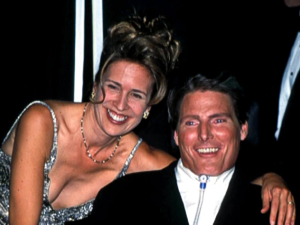
The Heart Of A Hero: A Tribute To Christopher Reeve (18:00) brings light to the films’ true star by way of being part career highlights, part profile, featuring personal and work colleagues remembering their friend. Superman is obviously a major touching point, but the featurette spreads much further a field to include other anecdotes and the tragic accident that would render him incapable of performing the Man Of Steel’s feats but certainly didn’t rob him of his inspiration to others. On the flipside of the scale, the strange, bizarre and quite frankly scary The Adventures Of Superpup TV pilot (21:30) finishes off this selection, although I’d have very much welcomed the Superboy pilot too (it’s available only in the concurrent Smallville: Complete Series set. Produced after the sudden death of George Reeves, these shows were attempts to replace The Adventures Of Superman, using the same sets and crew, although neither was ever picked up. It’s not hard to see why in this case since the premise – Superman with little people in dog costumes as “Bark Bent”, “Terry Bite”, etc – is so utterly bonkers it ends up being mesmerizing! The first half is from a nice color print, the second from a multi-generation VHS, but that doesn’t really spoil the fun factor.

All in all, The Superman Motion Picture Anthology is more a compendium of what’s come before than it being an opportunity for Warners to pack the set with anything previously unseen. We know that there are additional longer television or workprint cuts, further deleted scenes, behind the scenes material and more related content that could have been included here. Warners have never been strong on galleries, but there’s a wealth of printed material that would have been a big bonus to see, although perhaps the biggest disappointed in what we do have here is in the 1940s cartoons not making any leap to high-definition. It’s a very fine selection of supplements, to be sure, and it’s nice to finally see Singer’s alternate opening even if it is totally redundant, but there’s a great deal lacking here if you’re looking for anything more than a decent compilation of everything already out there.
Case Study:
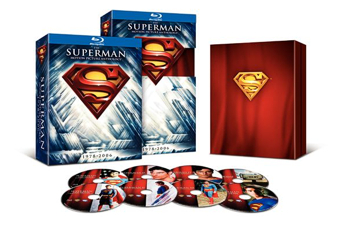 As mentioned above, the basic mission for The Superman Motion Picture Anthology collection is to provide a high-definition upgrade to those that jumped all over the similar 2006 DVD content, which came housed in a deluxe tin with embossed Superman shield in both Reeve and Routh-fronted designs.
As mentioned above, the basic mission for The Superman Motion Picture Anthology collection is to provide a high-definition upgrade to those that jumped all over the similar 2006 DVD content, which came housed in a deluxe tin with embossed Superman shield in both Reeve and Routh-fronted designs.
Without wanting to make that same impact, and also perhaps wanting to attract a wider audience, the Anthology this time around is a more standardized affair, although that’s not to say the packaging has been given the short-thrift!
Similar to the Batman Anthology released on DVD and Blu-ray, this Superman movie collection is stored on four overlapping digi-pack tray holders, wrapped in a sleeve that grandly features the Reeve shield as if the sleeve has been made from Superman’s cape (sadly, there’s no material, it’s just high quality cardboard). That assemblage then fits neatly into the outer slipcase, split near the top of the fronted S-shield so that the shield lifts off with the top of the case…a nice touch again akin to the Batman set.
On the back, an insert lists the basic contents but doesn’t have nearly enough room to highlight all of the set’s goodness. That’s left to the back of the digi-pack, which provides a check on all the supplements included on each disc as well as the contractual movie credits. The discs themselves repeat the style of the 2006 set, keeping a uniformed approach through all the discs. Although it’s not as lavish as the Daily Planet-styled booklet provided last time, there’s certainly quality here, and it feels very nicely designed.
Ink And Paint:
Superman: The Movie was always indented to have soft, fantasy feel about its cinematography, and this Blu-ray’s transfer – a new one instead of a rehash of the previous release – bests anything that has presented the film on disc before and retains Geoffrey Unsworth’s breathtakingly epic visuals. There’s a solid film feel, too, that preserves the grain of the stock even though many other blemishes have been removed. The biggest disappointment for me was in the slight gate weave, made all the more noticeable in HD, even if the rest of the film is as clean as I have ever seen it. If anything, the Expanded Edition is much better, losing the gate weave and displaying more clarity thanks to its 2000 film restoration that printed the negative to faster stock resulting in less grain. It’s a truly remarkable transfer that shows off the best of what Blu-ray can accomplish with archive material.
Superman II is in better shape to start off with, with a solid transfer for the original theatrical version that is closer to the extended cut of the first film in terms of look. Following the passing of Unsworth, Lester’s director of photography Bob Paynter does a good job of aping the soft fantasy style even if his lighting is a little flatter and Kidder’s re-shoots show her to have lost weight. The Donner Cut follows suit with the first film and improves second time out again, and with the restored footage having been preserved over the years and assembled so recently, it looks slightly sharper in quality and less grainy. To complete the film, several effects had to be recomposited, and some created from scratch, using a variety of techniques so as to “date” them accordingly. On the whole this works fine, but the HD format does show up some video artefacts that can occasionally remove long-time fans from the endeavor, though the digitally recreated opening credits expertly achieve the optical work of the first film.
Superman III also looks good from the start, and one thing that I was a little apprehensive of was how the sometimes obvious matte work would look blown up to hi-def proportions. Gate weave is non-existent and the image is mostly solid as a rock, with a light layer of grain that’s in keeping with the feel of the first two films’ more recent versions. Superman III’s effects are often a step up from the replacement scenes in the second film – apart from those final Thunderbirds style miniature rockets – but there are still a few dodgy mattes, here thankfully not quite as bad as expected. Sure, the split screen process might be more noticeable in the bad Superman/good Clark fight, but they’re great for their time and even the clearly shot-later Italian Pisa salesman moments don’t stand out as obviously as before. Sometimes the image is a little softer, but considering III hasn’t been the subject of a major restoration or reissue, it’s remarkably clean.
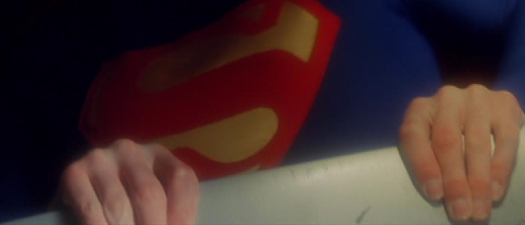
Superman IV: The Quest For Peace, the most derided of the four Reeve films (but certainly nowhere near being the worst of the “anthology” presented here as far as I am concerned!), looks totally unexpectedly fantastic given its reputation and gives a real insight into what this film could have been without any of the production shenanigans that plagued its creation. Sure, the budget-cut model and matte effects may show up more clearly – especially the reuse of one Superman flying to camera shot that plays over and over throughout – but they’re not all as bad as you may remember and otherwise the image quality is quite exceptional. A fine layer of grain keeps it consistent with the previous films, but color me impressed at actually how well Superman IV stands up, particularly ’s photography, which valiantly attempts to recapture Unsworth’s sense of depth and shows off the production design which, in shooting, proves that a bigger, more epic return to the values of the first was the intention.
Superman Returns, quite naturally being a modern-day product of digital cinematography, could never really be expected to look anything other than perfection on Blu-ray, even with its disc packed with a lot of other content. One of the first major features to shoot using Sony and Panavision’s joint Genesis camera system, it’s impressive how close to Unsworth’s look for the first film that director of photography Newton Thomas Sigel achieves, especially in the Kent farm scenes. The rest of the film in Metropolis and on Luthor’s genetically engineered “New Krypton” is more generic blockbuster and although everything has a warm glow about it, there’s no real differences in feel like there were in Donner’s original or even Lester’s first sequel and the cold blue/green color tone can get quite tiring quite quickly. Grain is practically non-existent, but all the HD format does is show up the obvious CGI of the effects shots that look even more rubbery when I wasn’t actually looking out for them. The production design is sometimes classic in a good way, but after his last two appearances you could only wish that Chris Reeve was around to get this kind of production treatment, or at least that Routh could express a little more super-ness about himself.
NOTE: As always with our Blu-ray reviews, the images presented here are for illustrative purposes only and do not reflect the outstanding picture quality of the discs.
Scratch Tracks:
Superman: The Movie was one of the first major Dolby Surround movies presented in theaters back in the day, and as such the sound designers went to town with the new technology. The original theatrical soundtrack, here in the correct Dolby 2.0, sounds dated and compressed now, but for kids of the era it’s still the track to go for on the original cut. In 2000, Superman received a complete sound overhaul for the potential theatrical reissue of the Expanded Edition, and for many old fans it can be distracting in its super-amplification of sound effects and Foley, which can often sound as if they are calling attention to themselves even if some of them are pretty fun (the opening title whooshes) and more fitting for today’s sound systems. This 5.1 track is available for the theatrical and extended cuts, and the only option for the extended.
Superman II has often been derided for cutting John Williams’ orchestra in half, or so to speak. Without Williams on board for II, Lester turned to his collaborator Ken Thorne, who adapted Williams’ themes to the new score. His work is actually usually overlooked and actually very skilful, the main issue being that the tighter budget meant his orchestra was chopped from Williams’ 120-plus players down to just over 60. The 2006 DVD presented remastered audio from the original sessions for the first time (instead of the thin stereo track from 1980) and instead of the “high school band” sound of before, Superman II now sounds closer to the first film in intent, if not in quite the same fullness. The Donner Cut replaces Thorne’s score with cues from Williams’ original, in keeping with the objective of going back to how things might have been (though sometimes overusing one or two cues too much), and sounds as good as can be expected with a mix of 1979 production sound and 2006 mastering.
Superman III, as with its image, approximates the feel of the original release of the second film, again with Thorne’s adapted music scoring high in the way it presents the established Williams themes in new ways. Especially good is how the “Kryptonite theme”, used by Williams in the first film as a haunting call-back to the doomed planet and by Thorne in the second as a theme for the Kryptonian villains, is brought back as a theme for the bad Superman, particularly at the height of his almost schizophrenic breakdown, which is very effective. The orchestra is again thinned down from Williams’ lush 100-plus players, but at times it seems fuller and quite unexpectedly spatial. This is the first time all of the Reeve films have been given DTS audio transfers, and the difference for the Lester-directed second and third films are the ones to benefit most.

Superman IV: The Quest For Peace is perhaps the film to benefit most from this new HD transfer in terms of image and sound, not so much as in making the film better overall – the silly plotting takes care of that – but in bringing a new respect for what was trying to be achieved. Being given score credit for the first time since the first film, Williams music sounds more or less super again in the hands of Courage, who really brings a sense of truth to certain scenes, especially the opening ones set back on the Kent farm in Smallville. The cuts in the film are noticeable: there’s what looks like it could have been a nice crane shot as Clark walks back to the farmhouse just about to start as the sequence cuts, and later in the Superman/Lois flying reprise, some audible music edits suggest a better sequence was originally planned, which sadly kind of tells the story of this entire film, now even more apparent as to how it was crippled in post-production.
Superman Returns’ main problem in terms of watching the wretched thing back in super quality is that the increased clarity only serves to point out all the things that are wrong with it. Soundtrack-wise, the blame must be set squarely at Ottman’s poor scoring, which resorts to the usual kind of modern day blockbuster beats and essentially wastes having Williams’ iconic themes to play with. You can’t expect the composer shy away from wanting to bring some new elements to an old piece, but when he does so by embellishing what has worked so well before with lame choirs and basic notation, it comes off kind of crass. Likewise, although the rest of the soundtrack is full of incident, the flatness of the performance line readings just remind us again at how deflated of life this Superman seems to be: there’s hardly any energy on show (listen how quiet that supposedly hectic Daily Planet newsroom is) and a deep lacking of plain old fun.
A host of additional languages way too numerous to mention are also offered across all the discs in both dubbed and subtitled options. Essentially, pretty much all the European countries and derived languages are covered.
Final Cut:
Although I’m the biggest Superman nut, I’ve expressly waited to own any of the films on Blu-ray because it was inevitable that a set such as this would come along. I have been tempted several times to pick up Superman: The Movie, but thought it was ultimately unfair that the only edition of Superman II available so far had been The Richard Donner Cut, and so refrained (but found it very hard!) from owning the Man Of Steel’s first two films in HD (however justified it may be, the Donner Cut will always be a supplemental alternate version rather than a complete movie to me). Thank Great Caesar’s Ghost, then, for this Motion Picture Anthology that does a lot more than fill the space between 1978 and 2006 and stretches to include all of Superman’s movie appearances from the Fleischer Studios’ cartoons onwards.
If there’s one caveat it’s that Warners have dropped the ball big time on not including those shorts in HD, surely one of the most obvious ways to get us to buy these discs again and so now leaving the door open to an inevitable poorer collection from a public domain source. I understand that to restore these cartoons would have been expensive, but at least that would have effectively taken them off the market for others to exploit as there would be no contest in quality, and even provide a further option to the Studio in releasing them again as a single disc of their own. However, the set does provide enough justification for fans to want to own it for the original four Reeve movies and their various cuts, and includes more than enough supplements to please anyone, including a couple of new ones and another now in hi-def.
Is it a perfect, all encompassing set? Not quite – the Superboy pilot included in the Smallville: Complete Series collection is meanly held back, and I’d have loved to see the legendary Superman IV workprint. Returns still doesn’t have a commentary, but that’s no real loss as Singer obviously doesn’t know what to say other than perhaps apologize (although even two hours of him saying “sorry” over and over still wouldn’t placate me: the guy messed up, plain and simple!). Basically, as an in-depth intro and history of Superman on film, as an HD upgrade for fans, and as a tribute to a real Superman, Christopher Reeve himself, this is an essential way to remember the Man Of Steel and the unparalleled Reeve/Donner collaboration. Up, up and, indeed, away!
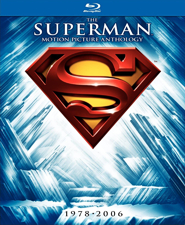 | ||
 |







